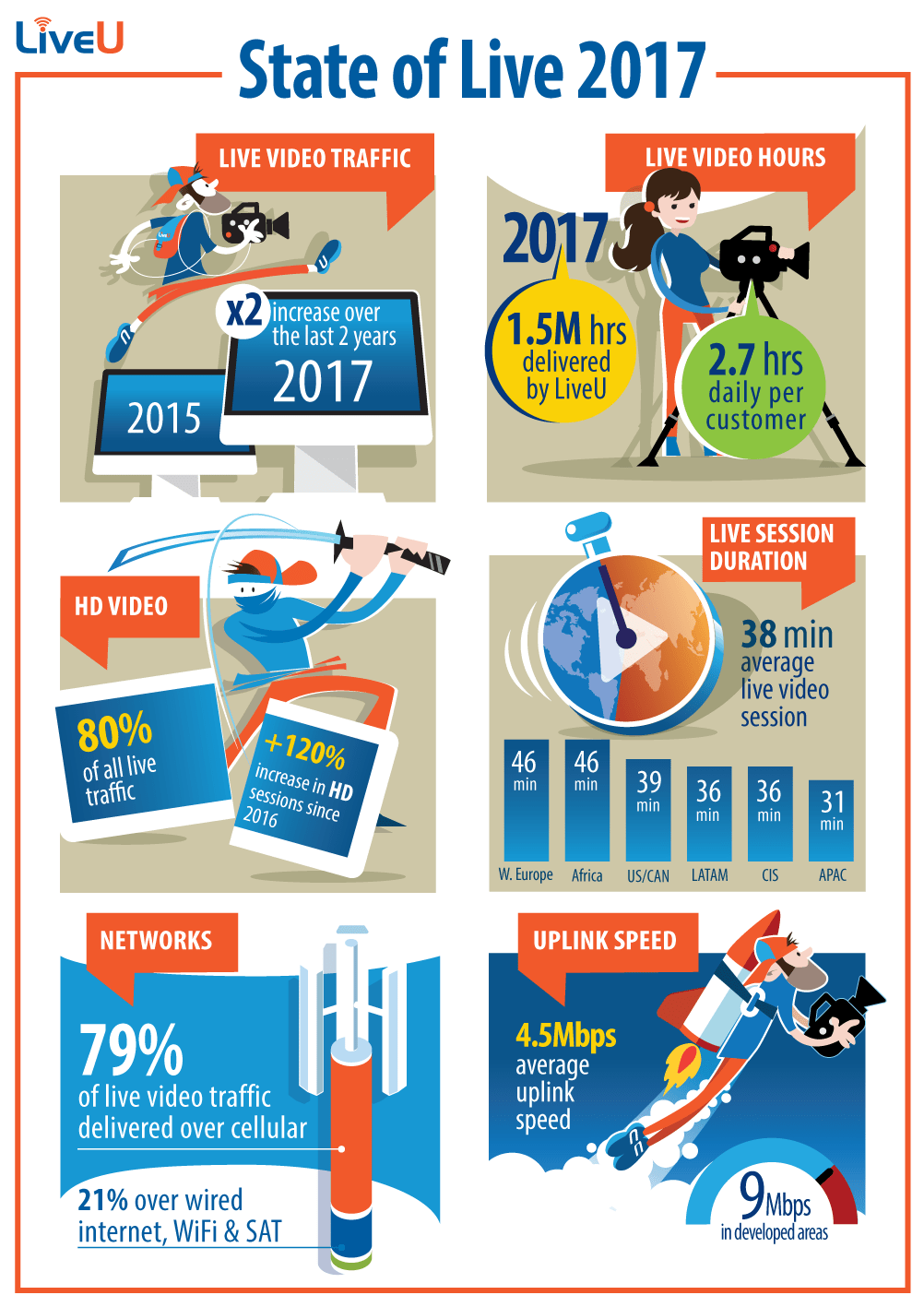LiveU Highlights Massive Growth in Live IP Video Traffic
By Adam Noyes
 With IP becoming more and more prevalent in broadcast media, cellular bonding seems to be the popular way to achieve that. There are many advantages to using cellular bonding technology for productions that are remote from internet sources and needs a quick way to transmit video. However, in certain locations cellular bonding is slowly becoming the main source for IP video transmission for many broadcasters in any type of location. LiveU has been has been monitoring the trends in IP-based video for the past year and uncovered many trends in how this is being achieved. Of course for LiveU to see positive growth in cellular bonding IP video is a sign they’re on the right track. With products like the LiveU Solo and their LRT Virtual Cloud Server, cellular bonding has become a real option for broadcasters of all sizes and types. For those new streamers looking for IP-based video productivity or the professional broadcaster looking for a new source for bringing in extra video feeds easily and efficiently, cellular bonding is the way to go.
With IP becoming more and more prevalent in broadcast media, cellular bonding seems to be the popular way to achieve that. There are many advantages to using cellular bonding technology for productions that are remote from internet sources and needs a quick way to transmit video. However, in certain locations cellular bonding is slowly becoming the main source for IP video transmission for many broadcasters in any type of location. LiveU has been has been monitoring the trends in IP-based video for the past year and uncovered many trends in how this is being achieved. Of course for LiveU to see positive growth in cellular bonding IP video is a sign they’re on the right track. With products like the LiveU Solo and their LRT Virtual Cloud Server, cellular bonding has become a real option for broadcasters of all sizes and types. For those new streamers looking for IP-based video productivity or the professional broadcaster looking for a new source for bringing in extra video feeds easily and efficiently, cellular bonding is the way to go.
LiveU’s data shows the reliability of bonded cellular with 79% of all bonded video now delivered over cellular networks only (wired internet connection, WiFi and satellite accounting for the remaining share).
The worldwide average uplink speed for video acquisition has reached 4.5Mbps, with developed areas experiencing approximately 9Mbps on average.
With the advances in HD video quality, HD 720/1080 video traffic now accounts for almost 80% of all traffic delivered this year and there has been an increase of over 120% in live HD sessions compared to 2016.
The length of video sessions has also increased with geographical differentiations worldwide. While the average broadcaster/content creator live session is 38 minutes, Western Europe and Africa show the longest average sessions at 46 minutes. In general, Africa has seen a move away from satellite to cellular bonding, with cellular often replacing satellite in some countries such as Ghana, Kenya and South Africa. This can be explained by the strength of the region’s 4G networks and the lower costs offered by cellular. Some broadcasters are also creating multi-camera productions using cellular transmission units….[continue reading]

